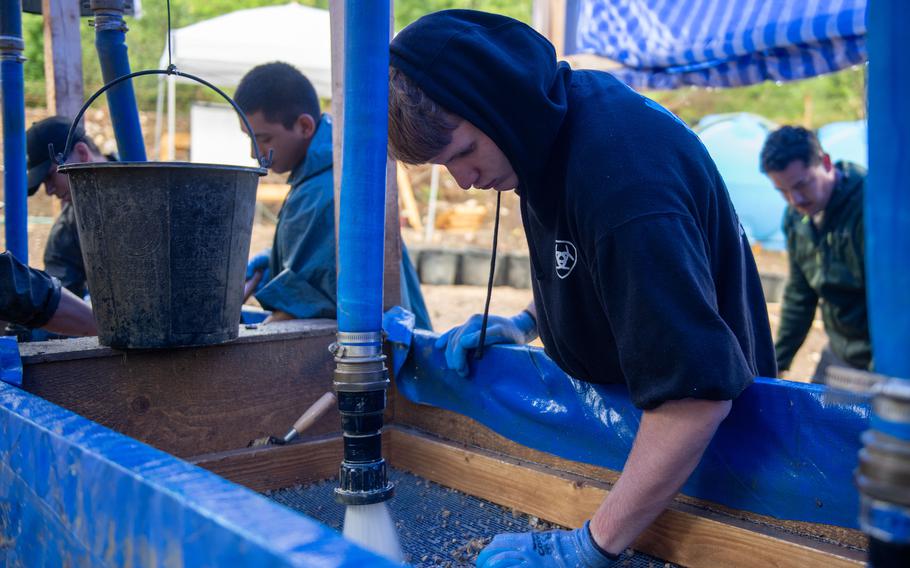
Army Pfc. Michael Cannan, assisting the Defense POW/MIA Accounting Agency, screens soil during a recovery mission in Italy, May 21, 2024. (Cole Yardley/U.S. Air Force)
VICENZA, Italy — Army paratroopers teamed up with a Pentagon agency earlier this month to locate and bring home the remains of a Republic P-47 Thunderbolt fighter pilot lost over central Italy during World War II.
Soldiers with the Vicenza-based 173rd Airborne Brigade aided the Defense POW/MIA Accounting Agency during the archaeological investigation between April 6 to June 8, at which point evidence was sent to DPAA’s laboratory.
DPAA does not release the exact location or name of the missing soldier until the family is notified.
There are more than 72,000 personnel still missing from World War II, with several thousand still missing in Europe, according to DPAA, the only federal agency with a mission to find missing service members from past conflicts.
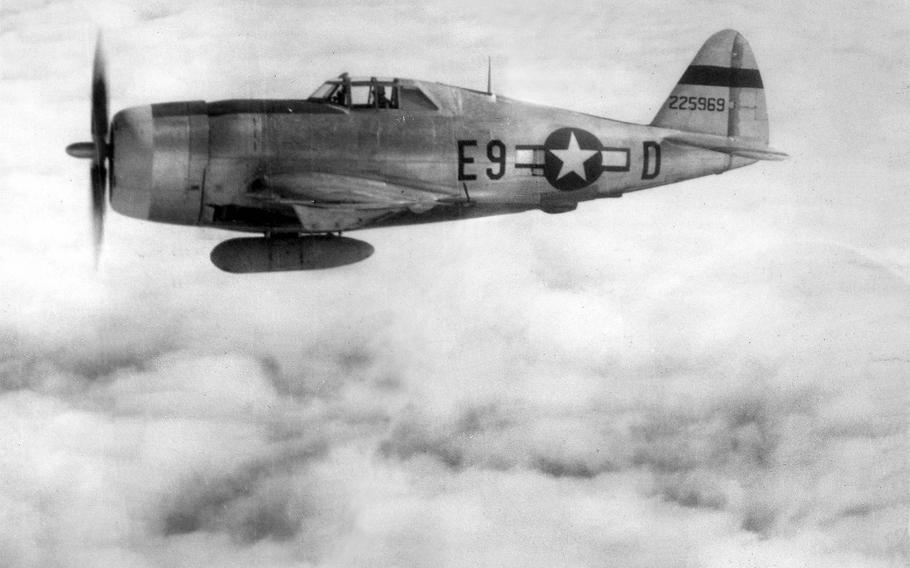
A P-47 Thunderbolt fighter plane. Earlier this month, a recovery operation to locate a missing Thunderbolt pilot lost over central Italy during World War II was completed by the Defense POW/MIA Accounting Agency, with help from the 173rd Airborne Brigade. (U.S. Air Force)
DPAA researchers and analysts comb through records and other evidence. They look at information on where a plane was last seen, whether residents reported a crash during the war, or if anyone reported wreckage found more recently.
When the information looks promising, they send a small team to visit for talks and preliminary investigation.
“They’re also doing things like using metal detectors, ground-penetrating radar, digging small tests, to try to find evidence that yes, indeed there is a plane here and the evidence says that it could very possibly be, in this case, a P-47 Thunderbolt,” said Sean Everette, DPAA spokesman. “If they find evidence that yes, this is an American plane, then we put it on the schedule to send out a recovery team.”
That’s where the 173rd Airborne Brigade came in. Fourteen paratroopers traveled south? to clear and construct the excavation site.
“When we went out there it was just trees, up in the mountains. All we saw was trees,” said brigade soldier Pvt. Samuel Aguilar-Andres.
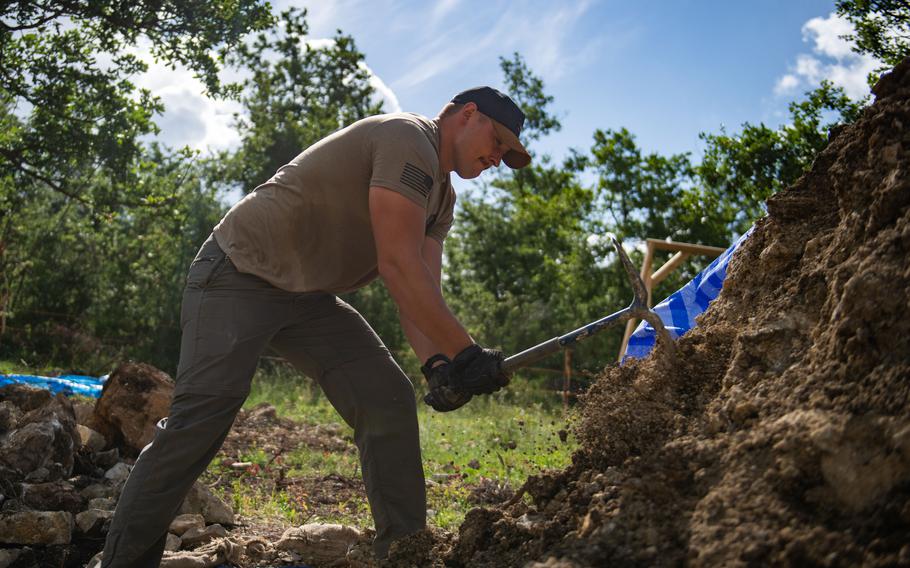
U.S. Army Capt. Jordan Smith, Defense POW/MIA Accounting Agency recovery team leader, uses a pickax to break up soil during a recovery mission in Italy, May 22, 2024. (Cole Yardley/U.S. Air Force)
They cleared vegetation and ran the wet screening station, where buckets of water were poured over wire mesh to help sift through dirt.
Aguilar-Andres said he felt connected to the mission due to the 173rd’s history in World War II, the location in Italy and the fact that everyone was working equally toward the goal.
“I saw leaders doing the same work as the privates, and that meant a lot,” he said.
Sgt. Dillon Long, a soldier with the 54th Brigade Engineer Battalion, also noted the teamwork from so many backgrounds.
“We had a lot of dudes who might be combat engineers doing generator maintenance,” Long said. “We had radio guys doing the same thing. You name it, people were out doing all sorts of things.”
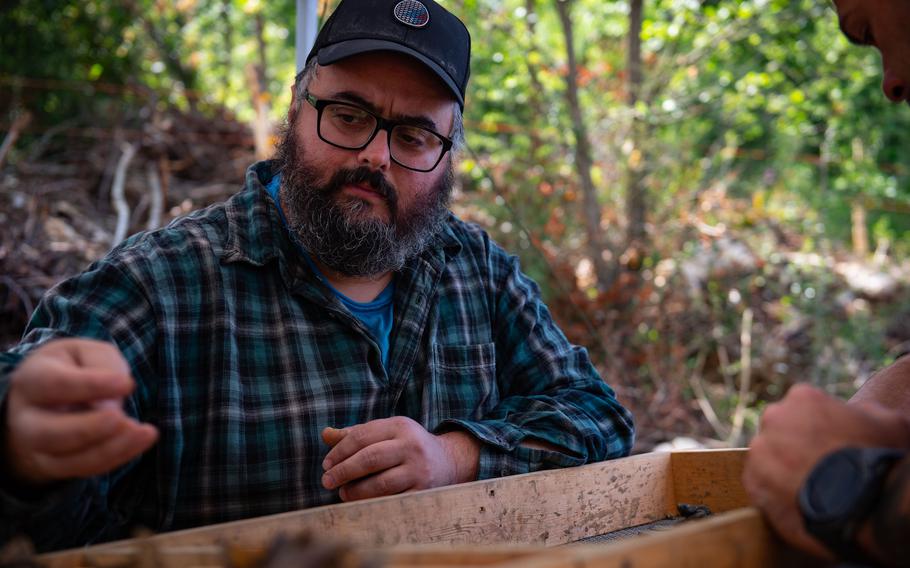
Clive Vella, Defense POW/MIA Accounting Agency scientific recovery expert, sorts aircraft wreckage during a recovery mission in Italy, May 22, 2024. (Cole Yardley/U.S. Air Force)
Investigators primarily look for human remains. But they also search for objects like a wedding ring or a watch they can tie to a photo of the service member, Everette said. In this case, the team looked for parts of the plane with a serial number.
When they make a match, DPAA contacts the branch the service member belonged to, which then goes to the family. The process takes anywhere from a couple of months to years.
Since 2015, when DPAA was formed under its current structure, the agency has identified 1,000 people.
While those searching for missing family members from World War II are often too young to have known the service members personally, Everette said they are still eager to find them.
“Sometimes, they still feel a connection because of the way their family kept their memory alive,” he said.
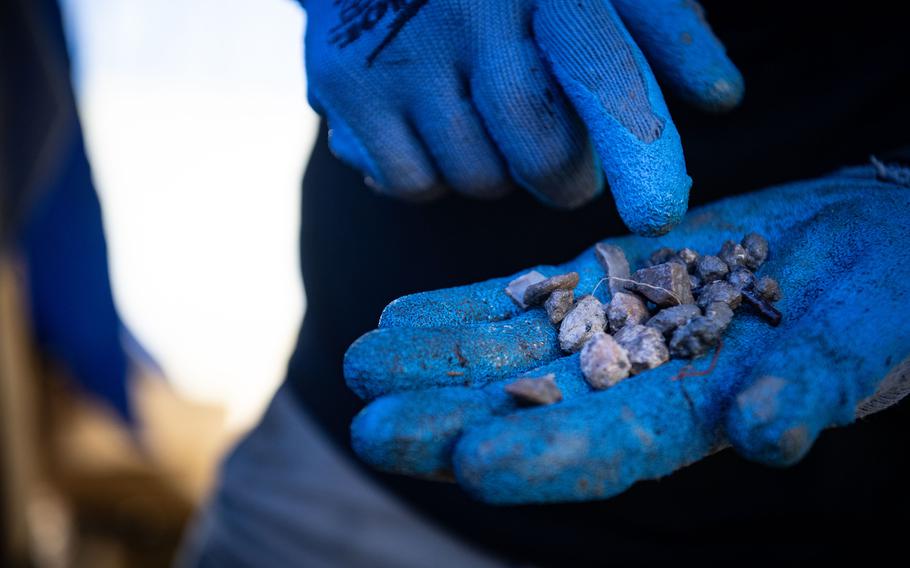
A Defense POW/MIA Accounting Agency recovery team member inspects soil during a mission in Italy, May 25, 2024. (Cole Yardley/U.S. Air Force)
In other instances, the next-of-kin know little about the people who served because their families found the loss too hard to talk about.
“The process of finding their family member helps to bring answers to those families,” Everette said.
Though the numbers of missing service members are daunting, Everette said DPAA will continue its mission until everyone is accounted for.
Long said he and other soldiers are comforted by this.
“It’s important to know that people are going to come look for you if you go missing,” Long said. “With everything going on in the world, with tensions rising, a lot of guys have families pretty concerned about us being stationed overseas.
“If something were to occur, we’re not going to become some statistic. It means a lot to us.”